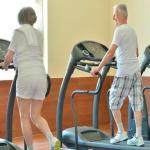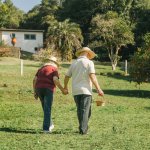At-Home Fall Risk Assessment Tools
Falls can happen anywhere, but unfortunately, many falls occur in the home. Per the Centers for Disease Control and Prevention (CDC), falls are the leading cause of injury and injury death in those over the age of 65. Each year, 3 million older adults are treated in emergency settings for fall-related injuries, such as broken bones and head injuries. The best way to prevent a fall is to be proactive. Did you know there are fall risk assessment tools and remote physical therapy solutions your loved one can use without having to go anywhere?
What increases the risk of falls?
There are many factors that play a role in fall risk. Typical age-related changes like decreased muscle strength, lower bone density, slower reflexes, and impaired balance contribute to an increased risk for falls. Existing health conditions can impact the way someone moves within their environment, making them unsteady or requiring them to take more frequent rest breaks due to fatigue. Changes in cognitive status may also cause confusion or disorientation which can lead to unsafe behaviors. The addition of new medications or the interaction of multiple different ones may cause side effects such as dizziness, fatigue, muscle cramps, and other bodily responses that can result in falls if not treated. It is also important to consider the environment your loved one spends most of their time in is safe. Ensure they have ample room to walk and clear pathways, safety devices like railings and grab bars if needed, and that all trip hazards are addressed. For more home safety and online physical therapy tips, visit the OneStep blog.
What is a fall risk assessment?
A fall risk assessment is done by a healthcare professional, such as a physical therapist. The assessment will take into consideration your loved one’s medical history, muscle strength, endurance, balance, and gait (the way they walk). In traditional settings, this type of assessment is done in person and not within the individual’s natural environment, so providers are only able to observe movement in a controlled setting and not in real time. Now, with the advancement of new physical therapy technology and remote physical therapy solutions like OneStep, assessing fall risk and receiving guidance from a medical professional can be accessible and convenient.
OneStep’s fall risk assessment helps keep your loved ones safe
Using OneStep’s innovative physical therapy technology, getting your loved one an accurate fall risk assessment is easier than ever. By downloading the OneStep app, you can connect them to a licensed physical therapist who will perform a thorough evaluation of their mobility and get them started with a customized home exercise program to address their specific fall risk needs – all from the comfort of their own home using remote care solutions.
OneStep’s science turns any smartphone into a motion analysis lab. Your loved one’s physical therapist can precisely assess their walking pattern without needing any wearables simply by placing the phone in their pocket. OneStep’s ground-breaking fall risk assessment technology will notify the physical therapist of gait changes that are correlated with an increased risk of falls – so they can reach out in real time and intervene when it matters most before a fall occurs via remote care solutions. Getting started with online physical therapy is as simple as downloading the OneStep app!
More to Read:
Previous Posts:
Next Posts:




